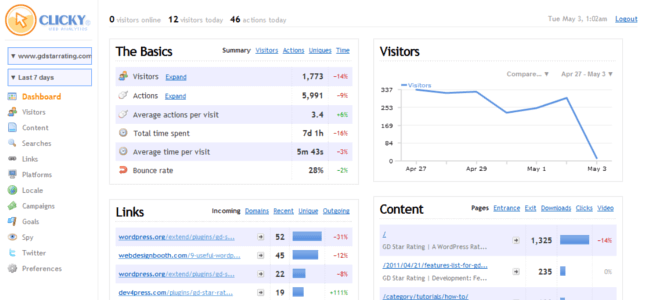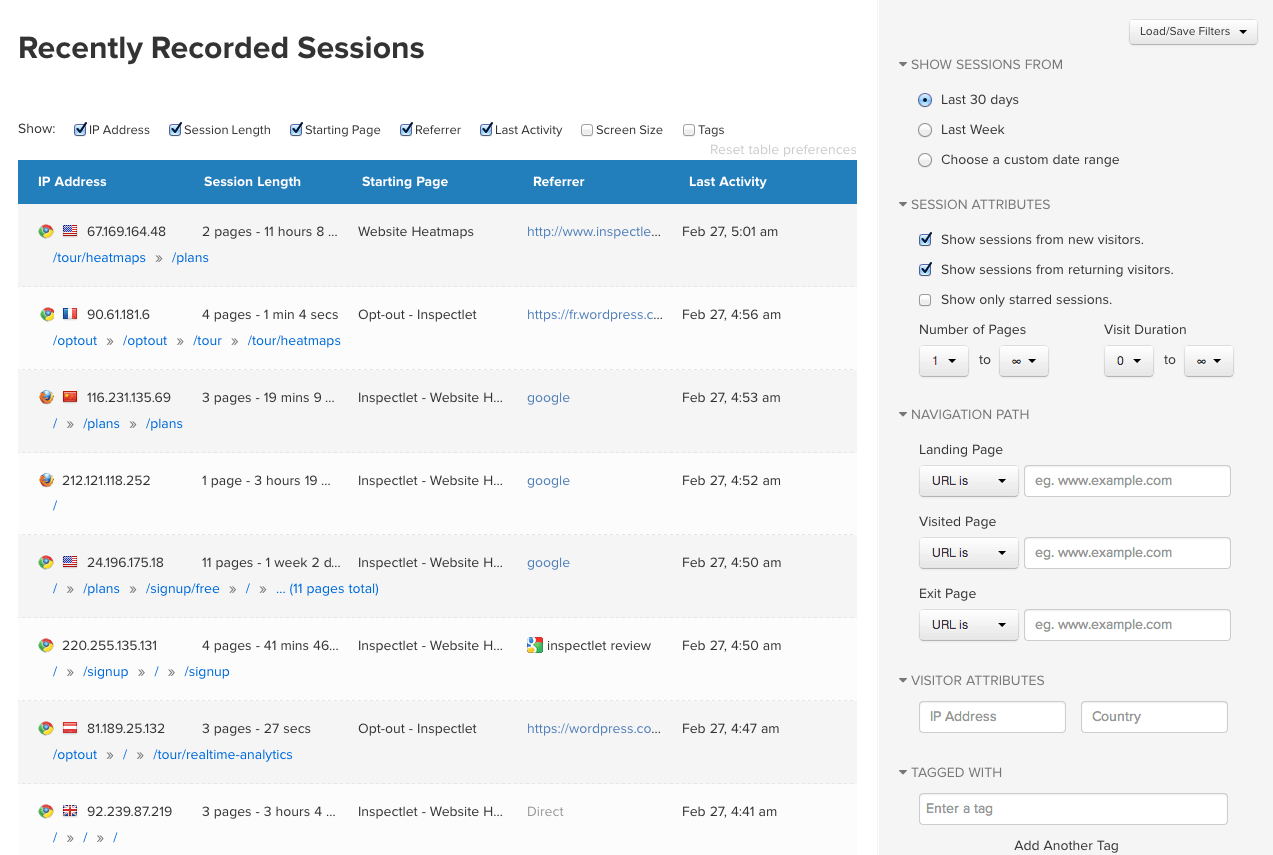User Experience (UX) is somewhat of an ambiguous term. After all, how do you determine what is good UX and what is bad UX? Where do ‘they’ draw the line? And how do you know if you’ve got things under control? Offering a superior digital user experience is becoming increasingly important among businesses and customers alike – which means you’re going to need the answers to these questions if you want to succeed in achieving a good UX. A great way of learning more about the quality of the UX you provide is by testing and measuring it using User Experience Testing Tools.
Updated: July 2024
User Experience Testing Tools are digital tools that allow users to ensure their visitors are interacting with the website or mobile app without frustration or complications. And not only that but these tools can help developers and designers in the design process of a website or mobile app as well.
This article will take a look at the 5 different types of tools used for User Experience Testing, which are as follows:
- Website Analytics Tools
- Visitor Recording Tools
- Multivariate Testing Tools
- Usability Feedback Tools
- Prototyping Tools
Perhaps you already work with some of these tools but does that necessarily mean your digital arsenal is complete? We’ll leave that up to you to decide…
1. Website Analytics Tools
Website Analytics Tools provide their users with insight into visitor activity on their website or mobile app. From page traffic to visitor frequency and from traffic sources to referrals, there’s a lot to be learned from these tools regarding the performance of your site. In addition to this metadata, these tools can track important events that occur on your website. For example, when a visitor leaves during any significant online processes such as onboarding. This data is often collected in real-time too, giving the user the opportunity to act on results quickly (e.g. via targeted communication mediums such as email or smart notifications).
However, what these tools lack is the ‘why’ factor. In other words, they don’t provide an explanation as to the why something happens or why a visitor does something.

Source: Clicky
Some of the more popular website analytics tools include Google Analytics, Clicky and Chartbeat.
2. Visitor Recording Tools
Visitor Recording Tools allow users to track complete visitor sessions on their website. They do this by recording the interactions visitors have on their website, which are then stored and can be replayed at any time. These are helpful tools to have for a number of reasons: they can help you discover where visitors are getting stuck or dropping off, they are capable of finding and reproducing bugs to help you improve UX, they enable the user to understand and improve user onboarding and they give you the chance to test and enhance new features or web pages.
But be careful with these tools, there’s quite a bit of discussion about the privacy risks that arise when capturing personal visitor data. Read more about these risks here.

Source: Inspectlet
Some visitor recording tools include Hotjar, Inspectlet and Mouseflow.
3. Multivariate Testing Tools
Multivariate Testing, also known as A/B Testing or Split Testing, is a technique used to learn which variations of a web page perform the best. How it works is there are two versions of a page that are compared (based either on content or an element on the page). This enables the user to determine which version is consistent with the goals you’ve set out for your website, whether that is boosting sales, lowering the bounce rate or increasing the conversion rate.
The only trouble with multivariate testing is that these tests can take weeks or even months depending on the amount of traffic coming into the site.

Source: VWO
Here are some great multivariate testing tools: Visual Website Optimizer (VWO), Optimizely and Lyssna.
Did you know that you can strengthen your A/B testing efforts with feedback? Learn more here.
4. Usability Feedback Tools
Usability Feedback Tools, or annotation tools, are often used by marketers and UX specialists to capture visitor/user input that will help them enhance page usability. With such a tool, visitors are able to point out certain page elements (e.g. forms, pictures, text or buttons) and provide feedback on those elements. Whether the flaw is unresponsiveness, confusing gestures or perhaps too many unused features, identifying where these problems are is critical to rectifying them and improving the UX. These kinds of tools are great for new websites and mobile apps where bugs and unclear content or page features must be pointed out quickly.
Note: be sure the changes you intend to make are worth making. Sometimes marketers get caught up in individual struggles while they are not actually a problem shared by other visitors.

Source: Marker
Some popular usability feedback tools include Mopinion, Marker and BugHerd.
5. Prototyping Tools
Last but not least, there are Prototyping Tools. Perhaps you’ve also heard them referred to as mock-up and/or wireframing tools, these tools are used to test and refine software designs. They make it fundamentally easier for a designer or web developer to create an app or website. How? Essentially they allow the user to strip the product down so that they focus mainly on the user interactivity and functions on the site. They also act as a platform for communication of ideas during the development stages with visual representation of designs.
Note: Not all tools can demonstrate navigation flows. It’s important to choose an interactive prototyping tool so that you can map interactions via scenarios. These tools are also
Some rather well-known prototyping tools include: Mockplus, Mockingbird and MockFlow.
Fill it all in with context…
These tools offer various different functionalities and purposes and it is clear that they all have something to offer in terms of discovering faults and optimising user interactions. But keep in mind, whether you choose to record visitor sessions, follow visitor behaviour using web analytics, use multivariate testing, or all of the above, there is still one thing missing and that is context.
These tools can provide you with lots of deep insights into customer behaviour and user experience, but they lack an explanation. So if you are thinking about working with these tools or already have them implemented, consider adding online customer feedback to this digital arsenal. Capturing and analysing customer feedback can provide you with even deeper insights into why your visitors behave the way they do, which in turn covers a critical ‘blind spot’ for a lot of digital marketers, developers and designers alike.
Mopinion
Mopinion is the #1 feedback software for web, app and email that not only falls under many of these categories, it also takes feedback one step further and offers in-depth analysis opportunities for its users. With real-time data visualisation in customisable dashboards and charts, users are able to quickly and efficiently digest large sums of data. Our ‘one-stop shop’ offers:
- Slide-In Surveys
- Feedback in modal
- Visual Feedback
- More complex surveys that include question routing
- Conversational feedback
- Deployment Assistance
- Direct Insights
- In-depth analysis, including text analytics, sentiment analysis, smart labeling, etc.
- Advanced data visualisation with in-chart filtering and customisable dashboards
- Action Management capabilities
We hope this overview provides you with some inspiration!
Ready to see Mopinion in action?
Want to learn more about Mopinion’s all-in-1 user feedback platform? Don’t be shy and take our software for a spin! Do you prefer it a bit more personal? Just book a demo. One of our feedback pro’s will guide you through the software and answer any questions you may have.







